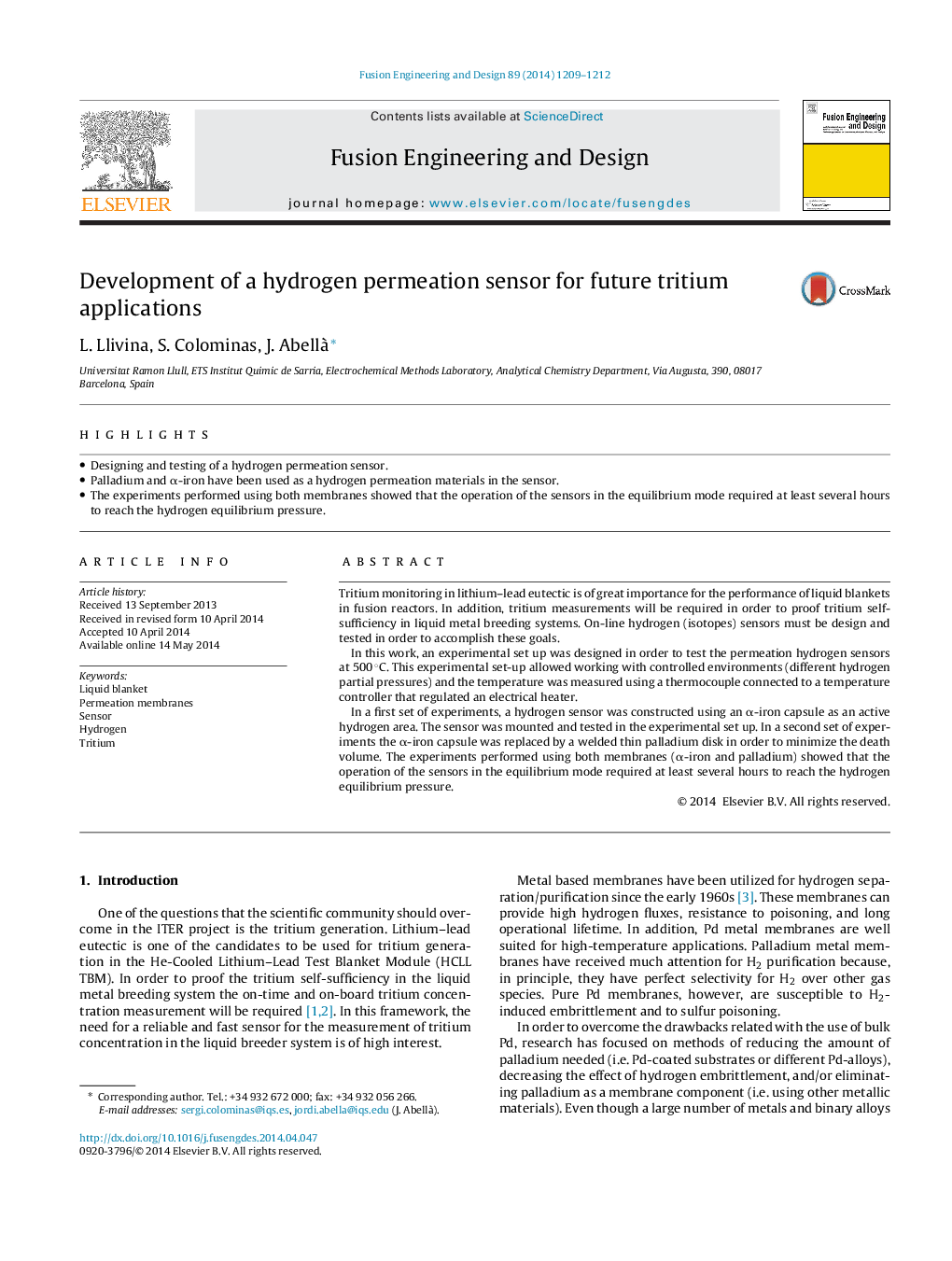| کد مقاله | کد نشریه | سال انتشار | مقاله انگلیسی | نسخه تمام متن |
|---|---|---|---|---|
| 271206 | 504990 | 2014 | 4 صفحه PDF | دانلود رایگان |
• Designing and testing of a hydrogen permeation sensor.
• Palladium and α-iron have been used as a hydrogen permeation materials in the sensor.
• The experiments performed using both membranes showed that the operation of the sensors in the equilibrium mode required at least several hours to reach the hydrogen equilibrium pressure.
Tritium monitoring in lithium–lead eutectic is of great importance for the performance of liquid blankets in fusion reactors. In addition, tritium measurements will be required in order to proof tritium self-sufficiency in liquid metal breeding systems. On-line hydrogen (isotopes) sensors must be design and tested in order to accomplish these goals.In this work, an experimental set up was designed in order to test the permeation hydrogen sensors at 500 °C. This experimental set-up allowed working with controlled environments (different hydrogen partial pressures) and the temperature was measured using a thermocouple connected to a temperature controller that regulated an electrical heater.In a first set of experiments, a hydrogen sensor was constructed using an α-iron capsule as an active hydrogen area. The sensor was mounted and tested in the experimental set up. In a second set of experiments the α-iron capsule was replaced by a welded thin palladium disk in order to minimize the death volume. The experiments performed using both membranes (α-iron and palladium) showed that the operation of the sensors in the equilibrium mode required at least several hours to reach the hydrogen equilibrium pressure.
Journal: Fusion Engineering and Design - Volume 89, Issues 7–8, October 2014, Pages 1209–1212
